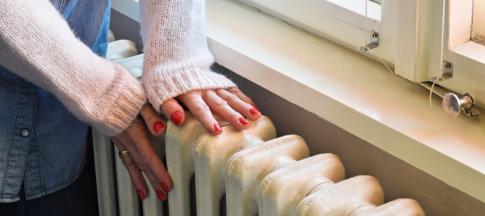
Whether you’re a landlord renting out your property, a homeowner, or a tenant living in a rented house, mould is a problem.
We discuss how to avoid it, how to fix it, and who’s responsibility it is.
How to spot mould
There are a few things that suggest you may have mould in your house:
- a musty smell
- black or dark-coloured stains on your walls or other surfaces
- damp in your walls, furniture or carpets
- condensation
If you’re a homeowner, you can take some more serious steps to see if you have (or could have) mould in your home:
- Get a professional to check your property’s structure to make sure the damp proofing is in good condition
- Check the roof and guttering for any holes or cracks that could let water seep into the home
Read our guide on rising damp.
What causes mould?
Mould is usually caused by condensation and is more common in the winter months.
Every household produces a lot of moisture through things like cooking and drying clothes.
When this moisture has nowhere to go and the space doesn't have proper ventilation, it can cause condensation.
This condensation can lead to mould growing on surfaces and walls.
The reason it’s usually worse in the winter is because in the warmer months people tend to leave windows open, meaning fresh air is cycled through your house.
How to prevent mould
Ideally, you want to avoid having mould at all – as preventing it is easier than getting rid of it.
There are a few things you can do to keep mould at bay:
- Make sure your house is ventilated properly – this includes opening windows and using extractor fans
- Consider using a dehumidifier – these reduce the moisture in the air and are especially useful in rooms that are more prone to damp, like bathrooms
- Clean your house regularly – make sure you keep any areas that are prone to damp clean, including wiping down sinks and showers
- If you can, dry clothes outside or use a dryer – hanging wet clothes up inside your home can contribute to mould
Will a dehumidifier stop mould?
The short answer is no, dehumidifiers won’t stop mould, but they’ll definitely help keep it at bay.
Dehumidifiers work by reducing the moisture in the air and mould spreading through water sources, so they do help to prevent mould and damp.
How to get rid of mould
It’s important to try get rid of mould as soon as possible, as it can have some negative effects on your health, including issues with your breathing.
We explain how below.
How to get rid of mould on walls
There are a few ways you can try to get rid of mould on your walls.
Whatever you do, it’s important to wear gloves and ideally a mask to protect yourself.
- Fill a bucket with water and some bleach (1 part bleach to 4 parts water) and use a cloth to wipe this solution across the wall until the mould is gone. Then use a dry rag to dry the area.
- Mix equal parts vinegar and water in a spray bottle. Spray it on the area and then leave it for around an hour. Then use a damp cloth to wipe the solution away.
- Alternatively, you can buy mould removal sprays in stores or online. Follow the instructions carefully.
How to get rid of mould on soft furnishings
If you have any soft furnishings (pillows, toys, clothes) that are mouldy, it’s important you clean them thoroughly.
Follow these steps:
- Fill a bucket with water and add a good dose of white vinegar.
- Leave your mouldy items to soak in this solution for at least an hour.
- Take them out and try to scrub off any remaining mould with a cloth or brush.
- Then, you can wash them on a regular cycle.
- Ideally, dry your clothes or other soft furnishings outside.
Whose responsibility is it to deal with mould in a rented property?
Often, mould is caused by condensation because tenants aren’t using extractor fans, opening windows, or cleaning the house properly. It’s their responsibility to make sure they start doing those things to help prevent mould.
But there are a few other structural reasons mould can appear:
- Water beneath the house rising through the building’s bricks and mortar, usually due to a problem with the property’s damp coursing (a layer of waterproof material within the walls, which is supposed to prevent damp from spreading).
- Leaking gutters and roofing can also cause signs of damp to appear.
These issues are structural, so it’s up to the landlord to deal with them.
Landlords are legally obliged to answer tenant complaints within 14 days of receiving them.
How to prevent damp and mould in rental properties
Like we said before, prevention is better than a cure.
Before you get tenants in, it’s a good idea to:
- hire a professional to make sure your damp proofing is in good working order
- inspect the roof and guttering for holes or cracks that may cause water to linger or seep into the home - this is especially important if there’s been any extreme weather
- deal with leaking internal pipes, cracked walls and rotting window frames
- install a high-quality extractor fan


